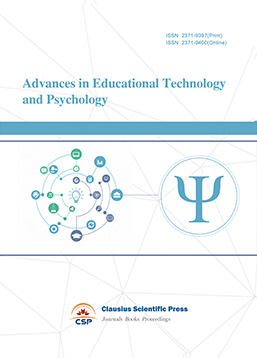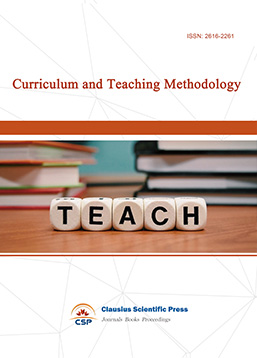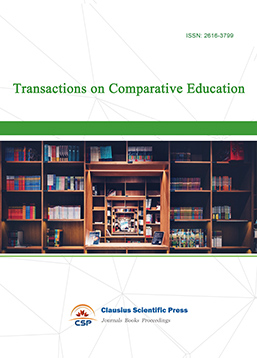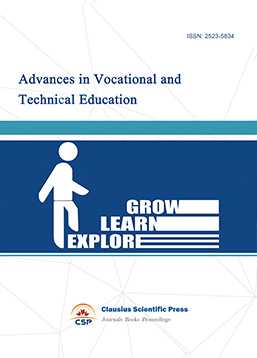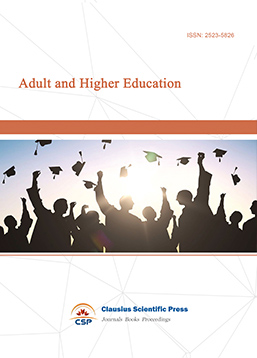Correlation analysis between knowledge hiding behavior and personality traits of young people in a community in Xi'an
DOI: 10.23977/appep.2023.040504 | Downloads: 8 | Views: 1357
Author(s)
Quanzhen He 1, Yanmei Liu 2, Xiaoxi Gao 1, Fan Cheng 1, Congcong Bai 1, Yunjie Tong 3
Affiliation(s)
1 Shaanxi University of Chinese Medicine, Xianyang, China
2 Shaanxi Provincial Hospital of Chinese Medicine, Xi'an, China
3 Shaanxi Second People's Hospital, Xi'an, China
Corresponding Author
Yanmei LiuABSTRACT
To investigate the current situation of knowledge hiding behavior and personality traits of young people in a community in Xi'an City and analyze their correlation. Methods: From January 8 to 27, 2023, 220 young people in a community in Xi'an were investigated by general data questionnaire, knowledge hiding behavior questionnaire and personality trait inventory. The score of knowledge hiding behavior of 220 young people in a community in Xi'an was (31.59±11.16), of which the rational dimension scored the highest (10.72±4.33), followed by the avoidance dimension (10.57±3.93), and the deaf and mute dimension scored the lowest (10.30±3.85). The score of personality traits of 220 young people was (127.49±15.22) points, and the agreeableness personality score was the highest (26.75±4.77) points. Neurotic personality score was the lowest (21.56±5.37); The scores of knowledge hiding behavior of young people in a community in Xi'an had statistical significance in gender and education level (P < 0.05); There was a negative correlation between knowledge hiding behavior and personality trait score of young people in a community in Xi 'an (P < 0.05). There is a negative correlation between knowledge hiding behavior and personality traits of young people in a community in Xi 'an. Therefore, young people learn to observe and control their emotions in the process of interpersonal communication, which is conducive to career development and information acquisition.
KEYWORDS
Young people, Knowledge hiding behavior, Personality traitsCITE THIS PAPER
Quanzhen He, Yanmei Liu, Xiaoxi Gao, Fan Cheng, Congcong Bai, Yunjie Tong, Correlation analysis between knowledge hiding behavior and personality traits of young people in a community in Xi'an. Applied & Educational Psychology (2023) Vol. 4: 17-22. DOI: http://dx.doi.org/10.23977/appep.2023.040504.
REFERENCES
[1] Yu Jiayi. (2019). Research on offline social model of young people based on sharing economy. China Academy of Fine Arts.
[2] Zhang Min, Ma Zhen, Zhang Yan. (2018). Summary of user knowledge hiding behavior: research content, knowledge system and frontier topic analysis. Library science research, no.14, p.2-9+30.
[3] Wen Zongchuan, Wang Hui, Wang Kewei, et al. (2022). The development logic of knowledge hiding: a literature review. Science and technology progress and countermeasures, vol.39, no.18, p.150-160.
[4] Wang Mengcheng, Dai Xiaoyang, Yao Shuqiao. (2011). Preliminary development of Chinese Big Five Personality Questionnaire III: Development of a simplified version and reliability and validity test. Chinese Journal of Clinical Psychology, vol.19, no.4, p.454-457.
[5] Connelly C E, Zweig D, Webster J, et al. (2012). Knowledge hiding in organizations. J Organ Behav, vol.33, no.1, p.64-88.
[6] Li Weiwei. (2020). Research on the impact of knowledge hiding behavior on the innovation performance of enterprise R&D personnel-based on the mediating role of innovation network embedding. Management Science and Engineering of Wuhan University of Science and Technology.
[7] Wang Mengcheng, Dai Xiaoyang, Yao Shuqiao. (2020). Preliminary development of Chinese Big Five Personality Questionnaire II: Validity analysis. Chinese Journal of Clinical Psychology, vol.18, no.6, p.687-690.
[8] Wang Mengcheng, Dai Xiaoyang, Yao Shuqiao. (2010). Preliminary development of the Chinese Big Five Personality QuestionnaireI: Theoretical framework and reliability analysis .Chinese Journal of Clinical Psychology, vol.18, no.5, p.545-548.
[9] Zhang Luyao, Li Qiufang, Liu Lamei, et al. (2022). Correlation analysis between knowledge hiding behavior and scientific research ability of nursing postgraduates. Occupation and health, vol.38, no.21, p.2967-2971, 2975.
[10] Li Wanying. (2015). Analysis of the influencing factors of youth groups on social stability in China's transition period. Shanxi Normal University Journal (Social Science Edition), vol.42, no.S1, p.19-21.
[11] Mi Z, Coffman D M. (2019). The sharing economy promotes sustainable societies. Nature Communications, vol.10, no.1, p.1214.
[12] Liu Yuying, Chen Jing. (2022). Regulating effect of big five personality on stress load and quality of work life in pediatric nurses.Acta Nursing, vol.29, no.20, p.44-49.
[13] Redelmeier D A, Najeeb U, Etchells E E. (2021). Understanding Patient Personality in Medical Care: Five-Factor Model. Journal of general internal medicine: JGIM, vol.36, no.7, p.2111-2114.
[14] Barańczuk U. (2021). The five factor model of personality and sense of coherence: A meta-analysis. J Health Psychol, vol.26, no.1, p.12-25.
[15] Li Ding, Li Haochen, Jiang Yan. (2022). Study on the relationship between competitive climate, knowledge hiding and deviant behavior. Labor Economics Review, vol.15, no.2, p.282-296.
[16] Pan Wei. (2018). Research on knowledge hiding of knowledge team members. Management Science and Engineering of Harbin Institute of Technology.
[17] Zhang Kan. (2022). Research on the development of population education level in Henan Province [J]. Modern trade industry, vol.43, no.24, p.35-37.
[18] Li Wu, Ai Pengya, Cao Xucheng. (2020). Nervous personality and willingness to pay for knowledge: a moderated mediating effect analysis. Books and Information, no.4, p.28-35.
[19] Rui Xueqin, Jiang Yuanhui. (2015). Research on the relationship between big five personality traits and knowledge sharing performance of enterprise science and technology talents. Science and technology management research, vol.35, no.05, p.157-163.
| Downloads: | 17424 |
|---|---|
| Visits: | 638999 |

 Download as PDF
Download as PDF